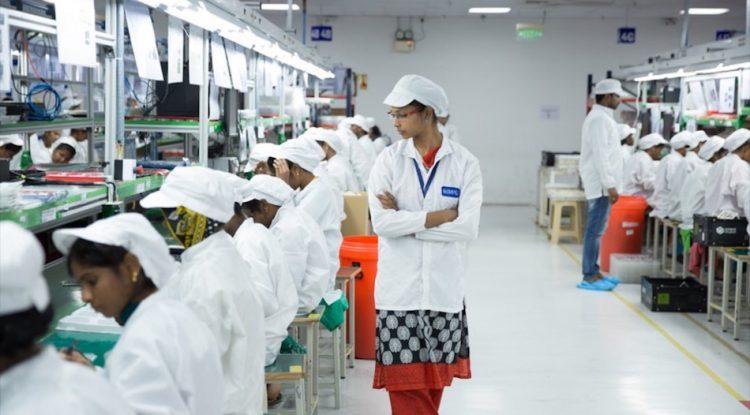
India’s emerging as Asia’s next manufacturing hub. Singaporean firms welcome.
By Pearl Lee for Tech in Asia
On top of the Taj Mahal, India boasts other gems – Mumbai is the finance capital and Bangalore is said to be India’s Silicon Valley. Their steady growth has been led by fast-paced urbanization and high consumption. But the Indian government has plans to transform India’s economy and develop manufacturing capabilities to meet domestic and international demand.
India’s growth as a manufacturing hub could be a great opportunity for manufacturing companies in Singapore.
Consumption-led manufacturing boom
The government sees itself as a key driver of this change. PM Narendra Modi devised a “Make in India” scheme to push for the restructuring of India’s economy and standard of living. Launched in 2014, the scheme aims to increase investment and innovation, grow skills, protect intellectual property, and build world-class manufacturing infrastructure.
As part of the scheme, the PM has made changes in labor law and other regulations to make doing business in India easier. This includes sector-specific subsidies, such as a capital subsidy of up to 25 percent for ten years for electronics.
The Global Manufacturing Competitiveness Index published by Deloitte has estimated that the manufacturing sector may eventually form 25-30 percent of the country’s GDP and make 90 million new domestic jobs by 2025.
India’s manufacturing advantages
The low cost of manpower but high quality and productivity of the workforce is expected to make India a favorable place to manufacture. Electronics, industrial manufacturing, transport and logistics, chemicals, and according to Deloitte real estate are five sectors projected to enjoy a high growth rate till 2025.
Companies could kill two birds with one stone if they manufacture in India and sell to its burgeoning domestic market. For instance, the Indian consumer electronics market is expected to reach US$400 billion by 2020, making it a prime market for IT hardware manufacturers.
Large companies have expressed confidence in India’s potential to flourish in manufacturing., Multi-nationals such like Toyota and Xiaomi are setting up manufacturing hubs and factories in India. Even iPhone supplier Foxconn, who predominantly builds in Shenzhen, has plans to set up a facility in India.
If India is a key market, manufacturing there is less risky compared to the costs of importing. The government has debated imposing import duties on mobile phones — a large market in India.
Singapore CEOs are welcome in India

Xiaomi facility in India. Photo credit: Xiaomi.
India’s emergence as a manufacturing hub could serve Singapore well. India has both the youth population and the land to overcome the current space and manpower constraints faced by the city-state.
If companies are looking to capitalize on this golden opportunity in India, there are plenty of resources they can access and partners available. For instance, companies can use IE Singapore’s suite of assistance tools to get a foot in the door.
At the IE Singapore’s ASEAN-India Business Forum (AIBF) 2017, Manohar Khiatani, deputy group CEO of Ascendas-Singbridge, points out that “India is well suited because they are a global leader in IT enabled systems. Much of manufacturing deals with data, and this is a tremendous opportunity.”
“India’s Make in India policy is the Prime Minister’s brainchild, and thus it gets significant airtime,” says Ravindra Pisharody, executive director of Tata Motors’ commercial vehicles, at AIBF 2017. “The fact that this policy looks secure in the near future may make it possible for companies to take advantage of it.”
Changing face of labor
However, India’s speedy economic growth is not without its challenges. According to Pisharody from Tata Motors, it is not easy to attract talent, whether blue or white collar, into manufacturing now.
Right now, the jobs that we want are quite different from those in the past.
Different skill sets are now required as well. There are opportunities for Singaporean companies with advanced manufacturing capabilities to expand to India, especially when those technologies can decrease reliance on manpower.
“40-50 percent of the manufacturing processes can be automated in ASEAN and India. This opens up a lot of possibilities,” Singh explains. Firms will need skills such as artificial intelligence, robotics, motion control, and tools that test factory equipment software. With data scientists, manufacturing assets can also be turned into interconnected stores of information to provide useful insights to companies.
3D printing, otherwise known as additive manufacturing, allows for incremental changes during the prototyping phase without having to modify the manufacturing machinery. This improvement during prototyping can save costs and reduce the manpower needed during the process.
Robotics used in manufacturing is still at a nascent stage. India bought 2,600 robots in 2015 according to the International Federation of Robotics (IFR), a small amount when compared to the 70,000 units in China and 50,000 units in Europe. Startups like Shastra Robotics, Gridbots, and Systemantics are providing affordable robotics options locally, but the industrial market still has significant room for growth.
For instance, as warehouses grow, robotics can play a part. Mahindra Logistics wants to work with robotics companies. Deutsche Post DHL Group is looking into robotics to improve their warehousing.
Digital engineering, 3D printing, smart sensors, and the Internet of Things (IoT) will also impact 70 percent of Indian automobiles by 2020. Considering that India is the sixth largest automobile producer in the world, advanced manufacturing could be a significant growth driver.
To expand to India, first learn to work in India
Overseas expansion is no small feat. Companies also need a deep understanding of the India landscape and how to work with locals. IE Singapore’s Internationalization Survey reveals that Singapore companies lack talents with global experience and specific skill sets, and also employees who are willing to go overseas.
At AIBF, IE Singapore signed three Memoranda of Understanding (MOUs) with the Confederation of Indian Industry (CII) and three local universities, Nanyang Technological University, National University of Singapore, and Singapore Management University. Singapore universities and IE Singapore will be able to tap into CII’s network of over 8,000 members to create work opportunities in India for enrolled students. This will result in talents ready to work there.
Training needs to be reactive to ensure that the skills taught will be relevant for the future needs of the market. India’s manufacturing industry is still growing, but it is in everyone’s best interest to continue keeping an eye on future trends.
If you’re planning to or wish to know more about expanding in India or other parts of ASEAN, tap into IE Singapore’s resources here or contact them here.





